by Lisa Cooke | Jan 27, 2015 | 01 What's New, History, Kids, Memory Lane, School Records, United States
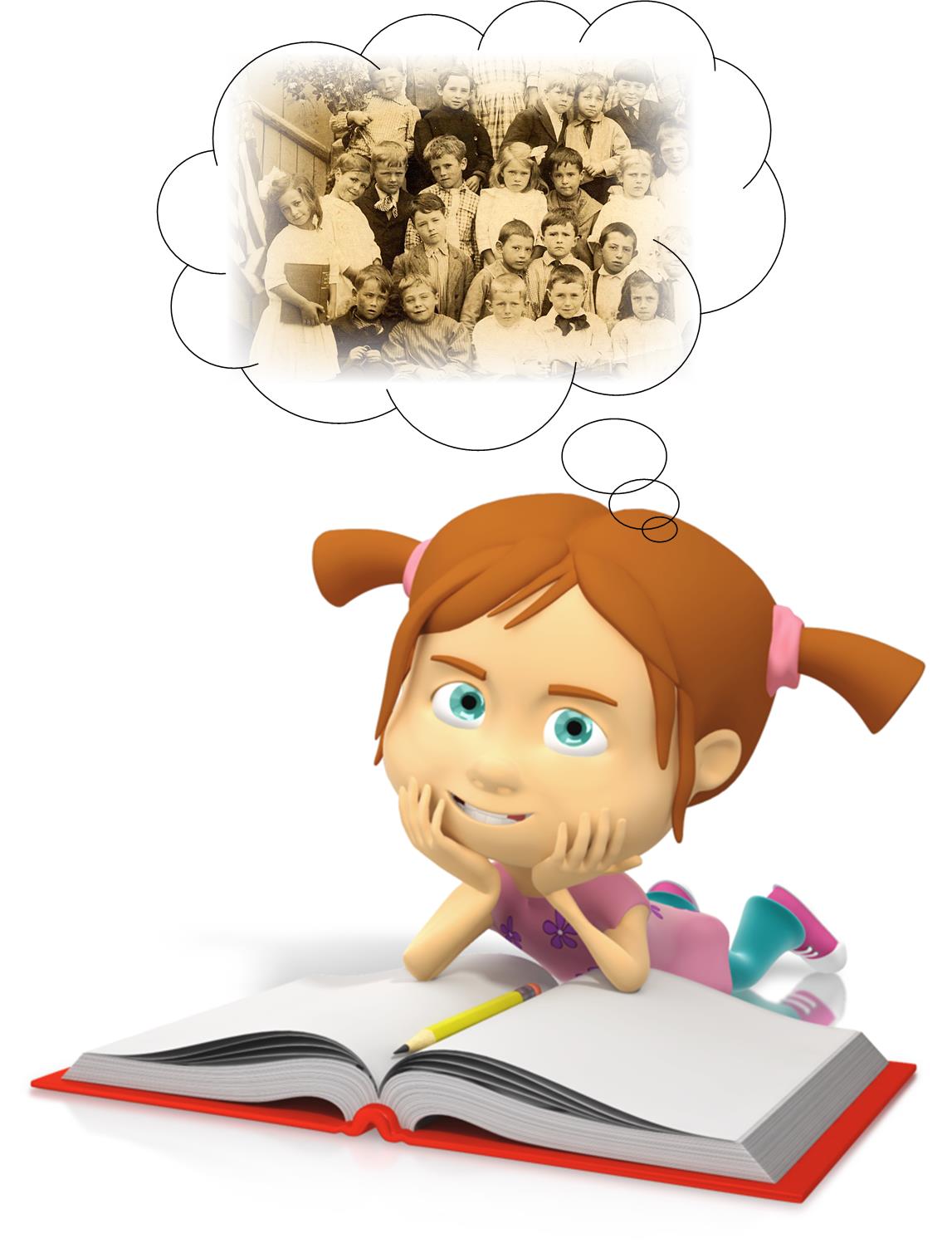 In years past, a five-hour graduation exam was required for eighth graders (around 13 years old) in many U.S. states. It made me wonder: are questions they asked still relevant today? How well would we score? Are we smarter than an 8th grader from 120 years ago?
In years past, a five-hour graduation exam was required for eighth graders (around 13 years old) in many U.S. states. It made me wonder: are questions they asked still relevant today? How well would we score? Are we smarter than an 8th grader from 120 years ago?
A copy of an 1895 graduation exam from Kansas has become famous since being circulated online. We tracked down the original exam at the Smoky Valley Genealogical Society in Salina, Kansas.
Here’s the Geography part of the exam, which took an hour (taken from a transcription at the above website):
1. What is climate? Upon what does climate depend?
2. How do you account for the extremes of climate in Kansas?
3. Of what use are rivers? Of what use is the ocean?
4. Describe the mountains of N.A. [presumably North America]
5. Name and describe the following: Monrovia, Odessa, Denver, Manitoba, Hecla, Yukon, St. Helena, Juan Fernandez, Aspinwall, and Orinoco.
6. Name and locate the principal trade centers of the U.S.
7. Name all the republics of Europe and give capital of each.
8. Why is the Atlantic Coast colder than the Pacific in the same latitude?
9. Describe the process by which the water of the ocean returns to the sources of rivers.
10. Describe the movements of the earth. Give inclination of the earth.
The Smoky Valley Genealogical Society has posted a copy of the original exam, along with links to the answers, at the above link. Their site also comments, “Many people forget that Kansas is an agricultural state. 8th grade was as far as many children went in school at that time. It was unusual for children to attend either a high school or a normal school because they were needed on the family farms.”
Wonder how each of our forebears would do on it? Consider following up on an ancestor’s level of education (like from a census entry) by finding a copy of a textbook, exam or another document showing the kinds of things they would have learned? The free Google Books is a great place to start! I devote an entire chapter to Google Books in the brand new Second Edition of my book The Genealogist’s Google Toolbox.
Learn more about researching your ancestor’s education here at Genealogy Gems:
Genealogy Gems Premium Podcast Episode 98 answers a listener’s question about finding Yearbooks. Sign in to your membership to listen, or become a member today.
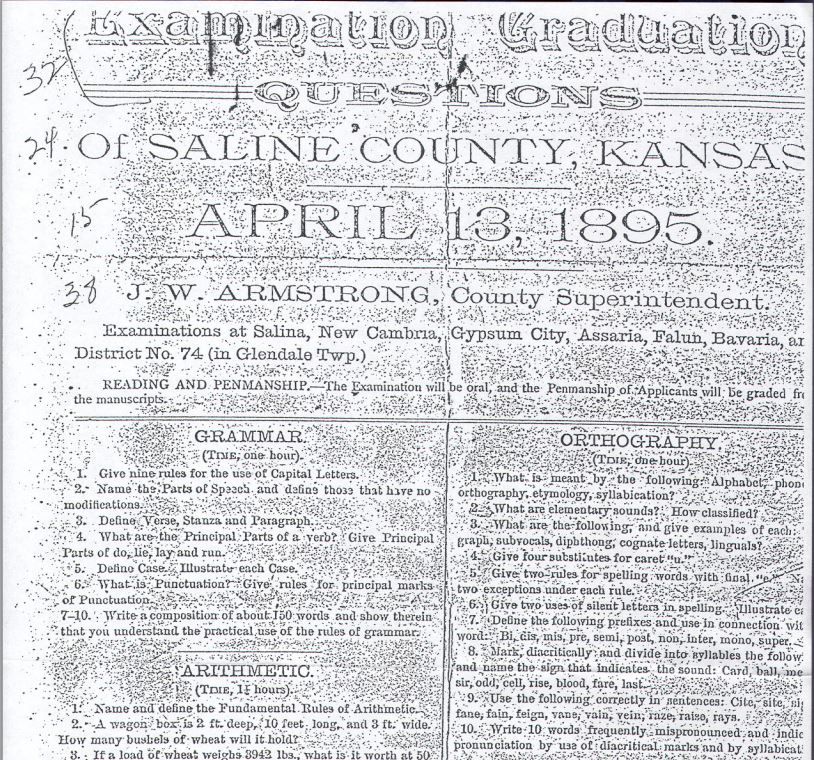
Image taken from exam posted by the Smoky Valley Genealogical Society, Salina, KS, http://www.rootsweb.ancestry.com/~kssvgs/school/exam1895/8th_exam_orig.pdf.
You’ll never look at “8th Grade Education” in a genealogical document the same way again!
by Lisa Cooke | Jan 22, 2015 | images, Military, Technology
If you’ve ever watched the television show Forensic Files now on HLN, you’ve probably seen forensic anthropologists create a bust of clay from skeletal remains. The time-consuming process provides a way to visualize what the person may have looked like. It’s a tedious task, with a keen understanding of anatomy intertwining with artistic skill.
One episode stands out in my memory. A woman’s remains were found months if not years after her demise. A bust was created and photographs were taken to be distributed as a sort of mug shot. “Do you know this woman” was posted in the newspaper along with the photo, and sure enough a good friend of the woman identified her immediately.
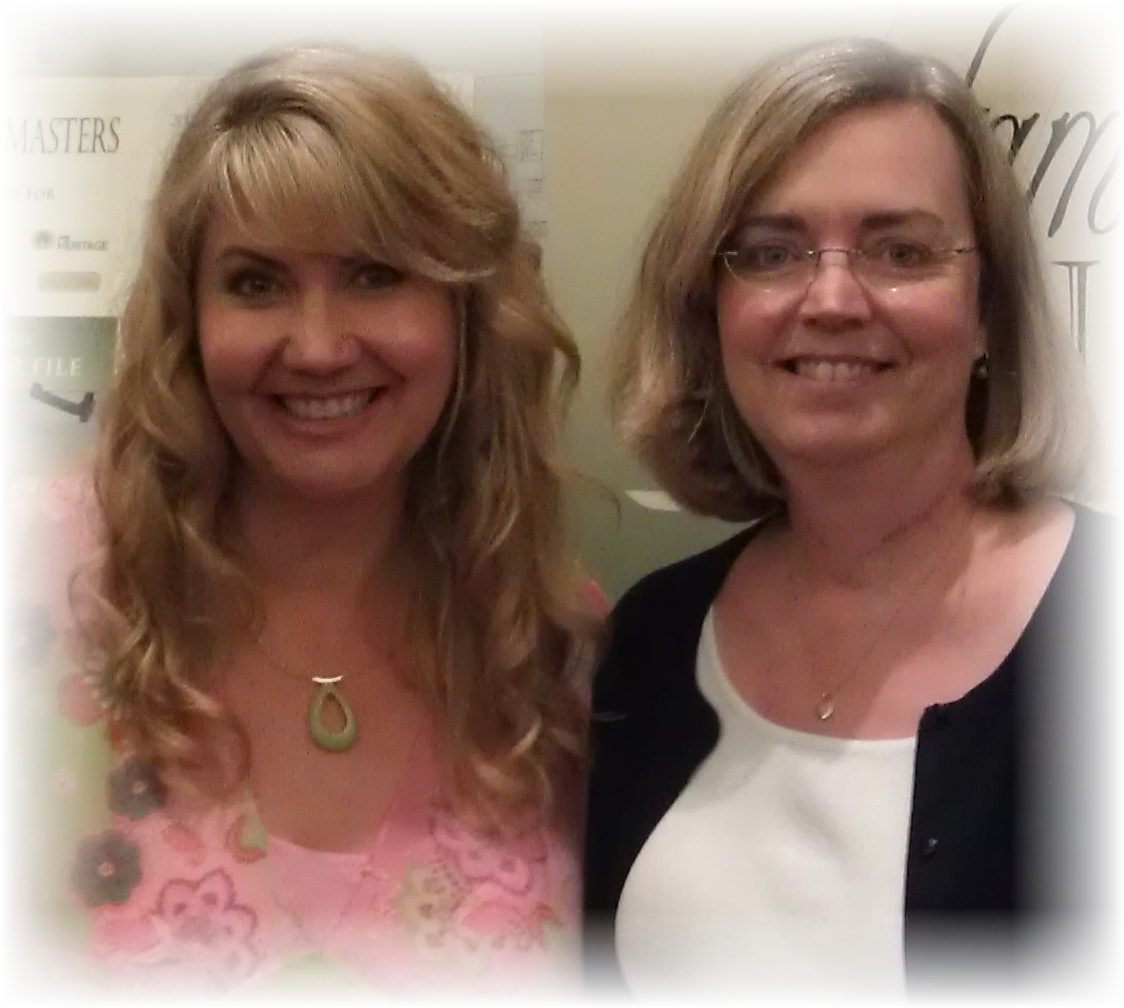
Lisa Louise Cooke with Maureen Taylor (right), the Photo Detective.
So why talk about this on a genealogy blog? Well, in the most recent episode of the Genealogy Gems Premium Podcast (#119) published this week, Maureen Taylor, The Photo Detective, and I discuss the future of technology and genealogy, which lead to a conversation on 3D printing. Maureen described how she had a bust of herself printed 3D (which I’m sure her long-into-the-future descendants will appreciate! You can see it on the episode show notes page.) and that got me to thinking about the work of the forensic anthropologists. Shortly after our conversation, Maureen sent me a link on Facebook called History’s Mysteries posted by the carrier company UPS.
The UPS Compass webpage features a video documenting the efforts of the Maritime Heritage National Marine Sanctuaries, with the help of UPS, to identify the remains of two sailors from the USS Monitor that sank in 1862 during a storm off the coast of Cape Hatteras. Sure enough, they had clay busts created from the skeletal remains in an effort to make the identification. (Click the link above to watch the video. Then put your genealogy skills to work and see if you can help them identify the two sailors.)
(Click the link above to watch the video. Then put your genealogy skills to work and see if you can help them identify the two sailors.)
What role did UPS play? They had the task of transporting the busts from the lab to the unveiling at the military ceremony. Any disruption of the soft clay would dent and alter the bust. I couldn’t help but wonder if 3D printing could have made the task of moving and distributing copies of the busts easier. It’s a fascinating technology. And who knows, perhaps 3D busts of ancestors will be as common place as our old photos are today. Do you think your descendants will want, perhaps even expect, to have 3D printings of you? Share your thoughts on the Genealogy Gems Facebook page.
 You can learn more about 3D printing here in the article called A New Industrial Revolution: The Brave New World of 3D Printing.
You can learn more about 3D printing here in the article called A New Industrial Revolution: The Brave New World of 3D Printing.
by Lisa Cooke | Jan 21, 2015 | 01 What's New, Australian, Evernote, Listeners & Readers, Organization
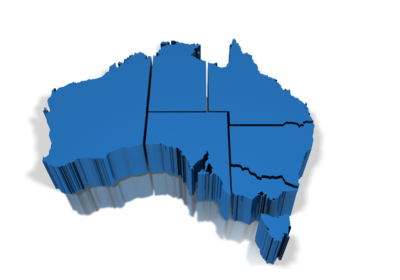 Do you use Evernote for genealogy, or are you planning to? Why not try a research checklist template?
Do you use Evernote for genealogy, or are you planning to? Why not try a research checklist template?
Genealogy Gems listener Michelle Patient sent us a link to her Evernote template for family history research in Australia and New Zealand. Better yet, she gave us permission to share it with all of you!
This template is a blank checklist you can use for every ancestor you research. On the checklist are all the different record types you might check: each type of vital record, census, land record, electoral roll, etc.l, along with the various repositories that should be visited or contacted. Why not create a similar temple for the countries you research, if you don’t have Aussie or Kiwi roots?
Resources
This is just one way Evernote helps you track your family history research. Learn more with these resources:
How to Get Started in Evernote, and the Ultimate Evernote Education
How to Add Text to a Web Clipping in Evernote
Should Evernote be My Digital Archive?
Genealogy Gems Premium members can enjoy a year’s worth of unlimited access to my complete series of genealogy how-to videos, which includes these full-length classes on using Evernote for genealogy:
 How the Genealogist can Remember Everything with Evernote (Beginner)
How the Genealogist can Remember Everything with Evernote (Beginner)- How to Organize Your Research with Evernote (Intermediate)
- Making Evernote Effortless (Intermediate)
- Collaborative Genealogy with Evernote
(Intermediate)
- Using Evernote to Create a Research Plan
(Advanced)
That’s just a peek at what Genealogy Gems Premium membership offers: click here to learn more!
by Lisa Cooke | Jan 20, 2015 | 01 What's New, Conferences, RootsTech, Travel
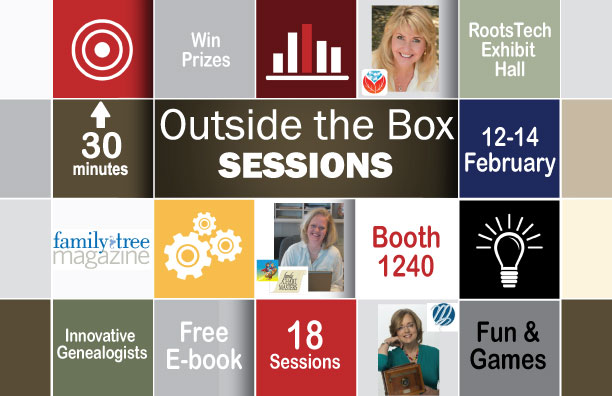 Back by popular demand! After fabulous response last year, Genealogy Gems will once again be sponsoring “Outside the Box Sessions,” a series of FREE mini-presentations at Booths 1240 & 1242 at RootsTech 2015.
Back by popular demand! After fabulous response last year, Genealogy Gems will once again be sponsoring “Outside the Box Sessions,” a series of FREE mini-presentations at Booths 1240 & 1242 at RootsTech 2015.
Our popular sessions help you think outside the box (and have fun and get free swag while you’re at it). Lisa’s sessions will include:
- Tech Tips for Newspaper Research (Thursday at 12:00);
- How to Use Google Earth for Genealogy (Thursday at 4:00);
- Google for Genealogy: What’s NEW! (Friday at 11:30 and Saturday at 2:00);
- Google Strategies for Common Surnames (Friday at 12:00);
- Win Prizes! Google Earth Genealogy Game Show (Friday from 5:30-6:30-perfect “Happy Hour!” activity);
- iPad Tips and Tricks (Saturday at 10:00);
- Evernote Tips and Tricks (Saturday at 12:30).
FREE EBOOK: Attend any session and receive our free ebook of handouts for all sessions!
 Click here for the full schedule and the Grand Prize entry form (which also gets you the FREE Outside the Box e-book with all session handouts). Drop this entry by Booth #1242 and say hello!
Click here for the full schedule and the Grand Prize entry form (which also gets you the FREE Outside the Box e-book with all session handouts). Drop this entry by Booth #1242 and say hello!
Lisa will also be signing copies of her brand new book The Genealogist’s Google Toolbox Second Edition!
We are again partnering with The Photo Detective Maureen Taylor and Janet Hovorka (author of Zap the Grandma Gap), and Family Tree Magazine.
Here’s a look at the fun we had at NGS last year:
By the way, our RootsTech partner Family ChartMasters is celebrating the release of its NEW pocket guide, The Chart Chick Insider’s Guide to Salt Lake City: Everything A Genealogist Needs to Know Outside the Library. Click here to get a FREE pdf travel guide to Salt Lake City and, if you like, order the book for only $9.95 (pre-order for pickup at RootsTech and pay no shipping, or add on $5 to have it sent to you).
by Lisa Cooke | Jan 19, 2015 | 01 What's New, DNA, images, Social Media
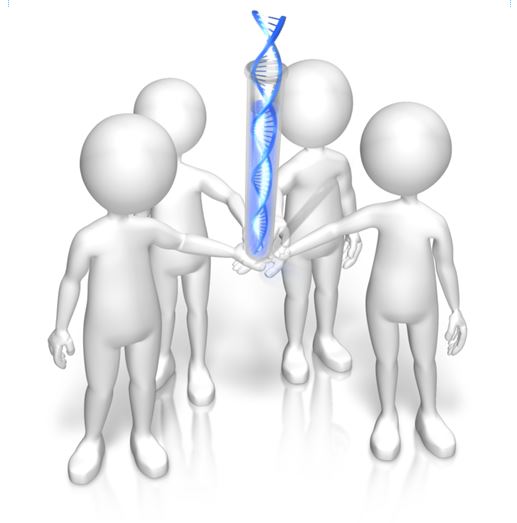 Family history organizations and studies based on individual surnames have been around for years. They are now integrating YDNA research into their efforts. Use surname projects to enhance your paternal DNA research!
Family history organizations and studies based on individual surnames have been around for years. They are now integrating YDNA research into their efforts. Use surname projects to enhance your paternal DNA research!
Surnames are the flagships of our genealogical research. We name our files after them and we tag our research with them. We wear our last names proudly on pins and necklaces and T-shirts.
But surnames can also be misleading. Illiteracy, language barriers, and just plain carelessness led to misspellings and alterations, not to mention those ancestors who blatantly changed their name to avoid detection.
The advent of YDNA testing has changed the way many genealogists view surnames and their role in their genealogy. Because a man’s YDNA is the same as the YDNA carried by each of the ancestors in his direct paternal line, the YDNA can act like a filter, clearly indicating which men with a particular surname, or variant, truly share a direct paternal line.
So how has YDNA testing affected family organizations that do surname research? I asked Debbie Kennett, a regular contributor to the International Society of Genetic Genealogy Wiki and Facebook page who is also involved with the Guild of One Name Studies. The Guild of One Name Studies was established in 1979 to promote public understanding of one-name studies and preserve the information obtained by those studies.
“Virtually every common surname is now the subject of a DNA project,” says Debbie, including “just over 500 Guild members who are running a DNA project. That number has jumped up considerably just in the last couple of years.”
The quality of those projects varies. Debbie tells us that a quality YDNA project includes three elements: “presenting the DNA data, recruiting people from different countries and also correlating all of the genealogy information.”
Jean Morrison, a member of the Morrison surname project, says that because of DNA testing, “identifying where in Scotland this family originated prior to coming to America ca 1728 has become a realistic goal. The Morrison Q Group has identified through Y line testing at 111 markers, 22 individuals with an MRCA (most recent common ancestor) within eight generations.” In plain English, this means that a definite YDNA pattern has been associated with her Morrison surname and with a common ancestor eight generations back.
Noel and Ron Taylor were two early adopters of YDNA testing for their Taylor family project. Their first samples were submitted to the Sorenson Molecular Genealogy Foundation in 2000. The former president and currently the head of the board of trustees for the Taylor Family Society, Noel says that using DNA “caught the attention of many people in our organization….It renewed great interest in the hearts of many people who had been doing research for many years [who may have] lost interest and were somewhat discouraged.” The Taylors have made significant breakthroughs with their DNA testing. They have connected several Taylor lines back to a common ancestor, verified their paper trails, and even found a line of Hodges that were actually Taylors!
It appears that YDNA is becoming part of the research plan for most family societies. But Debbie tells us that there is still much room for improvement in her organization. “Not all Guild members are running [DNA] projects. We have something like 2,700 Guild members so we are still not at the stage where the majority of Guild members are running projects.”
Besides The Guild, other organizations have been created to assist genealogists with their surname research, including a new organization just launched in November. The Surname Society’s goal is to “to build a collaborative environment where members are encouraged to develop their own approach to the investigation of their surname.”
Kirsty Grey, chairman of the Surname Society, says that DNA testing has taken a front seat role in the research of one of their founders as well as several early members. “DNA is one of the many strands of family history research (and to a greater extent, surname studies) which can connect individuals, often where genealogical research cannot.”
That really is the bottom line. DNA, especially YDNA, can tell you things about the surnames in your pedigree that you can’t learn in any other way. If you haven’t yet, it’s time to jump on the YDNA bandwagon and see what your DNA has to tell you.
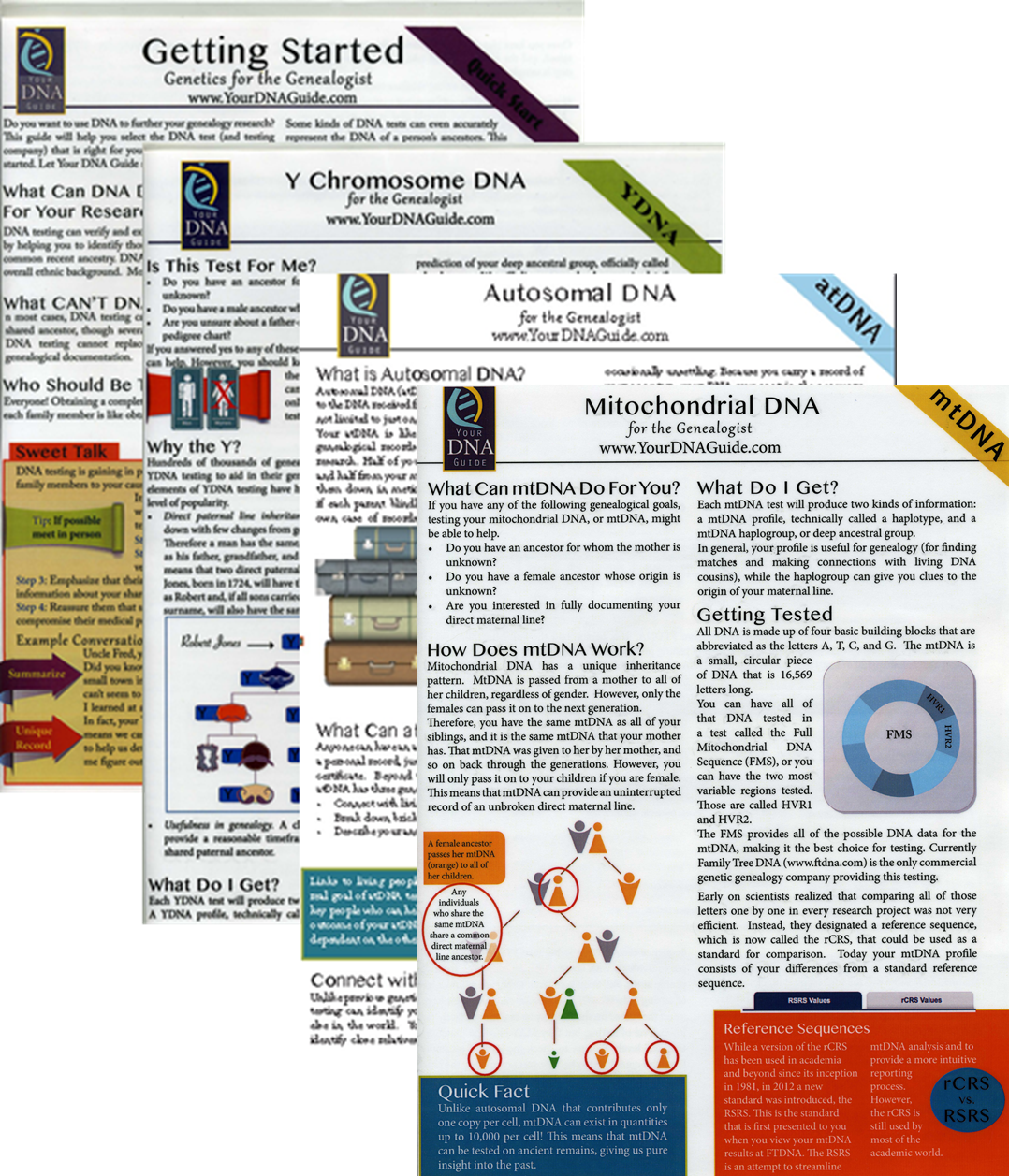 I can help you! Check out my series of quick guides (purchase all 4 laminated guides or the digital download bundle for the best deal):
I can help you! Check out my series of quick guides (purchase all 4 laminated guides or the digital download bundle for the best deal):
 In years past, a five-hour graduation exam was required for eighth graders (around 13 years old) in many U.S. states. It made me wonder: are questions they asked still relevant today? How well would we score? Are we smarter than an 8th grader from 120 years ago?
In years past, a five-hour graduation exam was required for eighth graders (around 13 years old) in many U.S. states. It made me wonder: are questions they asked still relevant today? How well would we score? Are we smarter than an 8th grader from 120 years ago?






 Back by popular demand! After fabulous response last year, Genealogy Gems will once again be sponsoring “Outside the Box Sessions,” a series of FREE mini-presentations at Booths 1240 & 1242 at RootsTech 2015.
Back by popular demand! After fabulous response last year, Genealogy Gems will once again be sponsoring “Outside the Box Sessions,” a series of FREE mini-presentations at Booths 1240 & 1242 at RootsTech 2015.





